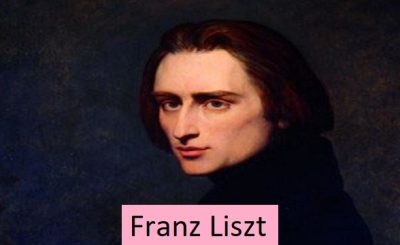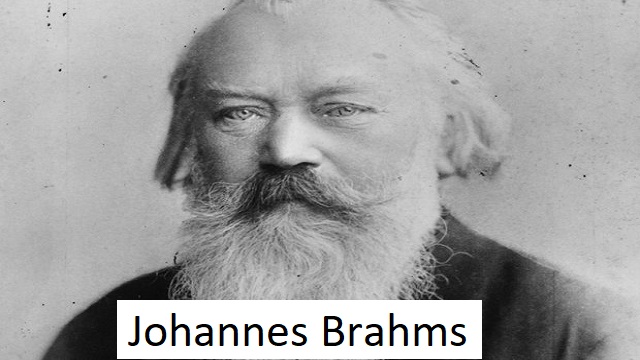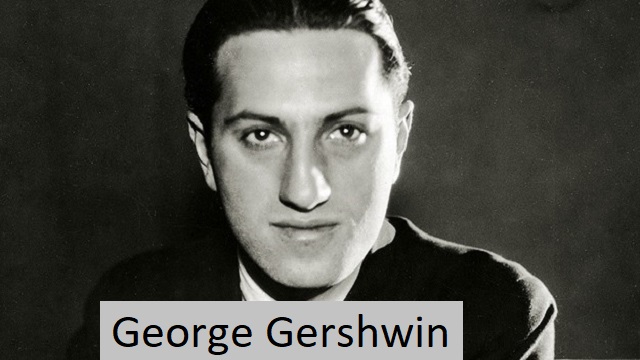Franz Schubert, full Franz Peter Schubert, (born January 31, 1797 in Himmelpfortgrund near Vienna [Austria] – died November 19, 1828 in Vienna), Austrian composer of classical and romantic music in his songs (poems) and chamber music, who bridged the world Creates. school music and are known for their melodies and harmonies. Among other works are Symphony n.9 in C major (big; 1828), Symphony in B minor (unfinished; 1822), a mass and a piano piece.

Youth And Career
Schubert’s father, Franz Theodor Schubert, was a schoolmaster. His mother, Elizabeth, née Fitz, did the housework at the time of her marriage. Franz was their fourth surviving son. His older brothers were Ignaz, Karl and Ferdinand and there was a younger sister, Marie-Thérèse. The eldest son Franz Schubert was a man of character who had founded a thriving school. The family was musical and maintained a string quartet that they played at home, the boy Franz played the viola. He received the basics of his musical education from his father and brother Ignaz and then switched to the organ and music theory under the guidance of the parish church organist. In 1808 he won a scholarship which gave him a place in the church choir of the imperial court and studied at the Stadtkonnect, the main boarding school for commoners in Vienna, where he was instructed by Wenzel Ruzica, imperial court organist and later composer. Antonio Salieri was at the peak of his fame at that time. Schubert played violin in the student orchestra, was quickly promoted to conductor and conducted in Ruzica’s absence. He also took a choir course, honed chamber music, and played the piano with fellow students.
Evidence from his schoolmates suggests that Schubert was rather shy and hesitant to show his first works. His early works included a long fantasy for piano duet, an aria, several orchestral overtures, various chamber music pieces and three string quartets. The unfinished operetta based on August von Kotzebue’s libretto, Der Spiegelritter, also belongs to these years. The interest and encouragement of his friends overcame his shyness and eventually turned Salieri’s attention to his work. Schubert’s voice broke in 1812; He left college but continued his studies privately with Salieri for at least three years. During this time, he entered the teacher training school in Vienna and in the fall of 1814 he became an assistant at his father’s school. Disqualified from military service because of his short stature, he continued as a school principal until 1818. The many songs he wrote between 1813 and 1815 are remarkable for their variety and intrinsic value. They are the product of a young genius who has not yet reached maturity, but shows style, originality and imagination. In addition to the five string quartets, there were three full-size masses and three symphonies. His first full-length work, Des Teufels Lustschloss (The Palace of the Devil’s Desire), was completed while he was in training college. However, at that time, composition was his main interest. On October 19, 1814, he composed for the first time Goethe’s poem “Gretchen am Spinnrade” (“Gretchen at the spinning wheel”) in Faust. It was his 30th song and in this masterpiece he created the German song (artist) in one fell swoop. Over 140 songs were composed in the following years.
The many unfinished song engravings and sketches left by Schubert offer insight into the workings of his creative mind. Obviously, the main stimulus was the melody. The lyrics of the poem brought the melody to life. Harmony (the chord structure of the composition) and modulation (change of key) are suggested by the contours of the melody. But the external details of the poet’s landscape—natural, domestic, or mythical—suggested such wonderfully graphic images in accompaniments as a spinning wheel, rippling water, or a “glittering robe of spring.” These features were fully present in the song of 1815. The years that followed deepened and enriched, but did not revolutionize these new divisions in song. In 1815 Schubert was busy with his ill-fated operas: between May and December he wrote The Four Year Post and Fernando and Claudine of Villa-Bella and Friends of Salamanca. .
At this time Schubert’s outside life was quiet. His college friends were loyal to him, especially Joseph von Spanon, who introduced him to the poet Johann Mayrhofer in 1814. He also persuaded the young and brilliant Franz von Schubert to visit Schubert. In late 1815, Schober went to Column Lane school to find Schubert in front of a classroom surrounded by his manuscripts, angering the willing young composer who wanted to escape his duties. In the spring of 1816, Schubert unsuccessfully applied for the post of director of music at a university in Ljubljana (now Ljubljana, Slovenia). His friends tried to interest Goethe in the songs, and in April 1816 he sent a volume of 16 settings to the poet in Weimar. It didn’t yield any result. Finally, in December 1816, Schubert persuaded Schubert to apply for a leave of absence. Despite his father’s reluctance, he was granted leave and then spent eight months with Schuber at the home of his friend’s widowed mother.
In early 1817, Schubert brought the baritone Johann Michael Vogel home to meet Schubert. As a result of this encounter, Schubert’s songs, sung by Vogl, became a rage in Vienna’s living rooms. From this period date his friendships with the Huttenbrenner brothers, Anselm, a composer, and Josef, an amateur musician, and with Josef von Gahy, a pianist, with whom he played in duet. But this period of freedom did not last, and in the fall of 1817 Schubert resumed his teaching activities. He is a Berdhoven (“frustrated”) musician, he wrote to friends. The first two years were particularly fruitful. Songs from this period include “Ganymed”, “Der Wanderer” and Harper’s song from Goethe’s novel “Wilhelm Meister’s Apprenticeship”. There were two other symphonies: the 4th in C minor (1816), which Schubert himself called a tragedy, and the popular 5th in B flat major (1816). A fourth Mass in C major was composed in 1816. The year 1817 marked the beginning of his remarkable series of piano sonatas. Six songs were composed at Schuber’s house, the best being No. 7 in E-flat major and No. 11 in B major.
The Maturation of Franz Schubert
Back in Vienna, he lodged with Mayrhofer and during the winter composed the operetta The Twin Brothers. Although sponsored by Vogl, production of the work was delayed, and in June 1819 Schubert and Vogel took an extended vacation to the singer’s native Upper Austria. The composer enjoyed the beauty of the landscape and was moved by the enthusiastic reception of his music everywhere. In Steyr he composed the first of his well-known instrumental compositions, the Piano Sonata in A major, D. 664, and the famous Trout Quintet for piano and strings. At the end of 1819 he became passionate about the texts of his friend Mayrhofer and the poems of Goethe, which inspired the excellent Prometheus.
In June 1820, Die Zwillingsbrüder was performed in Vienna to moderate success, with Vogel doubling the twin brothers’ parts. This was followed by incidental music for the play Die Zuberharf (The Magic Harp), which was performed in August of the same year. The gentle and sweet proposal became famous as Rosamunde’s proposal. Schubert became famous in a wider social circle than in the narrow sphere of friends and patrons. The wealthy and influential Sonliesner family took an interest in his advancement. His son Leopold was a close friend and supporter. In the late 1820s, Schubert composed the quartets (quartet movement) in C minor, which foreshadowed the great string quartets of the mid-1820s, and another popular piece, the motet for female voices to the text of his Psalm 23. December 1820. Choral arrangement of Goethe’s Gesang der Geister über den Wassern (Song of the Spirits on the Water) for male voice octet with bass strings, D. 714, completed in February 1821.
All Schubert’s attempts to publish his works were in vain. In early 1821, however, some friends offered his song “Erlkönig” (“Erlkönig” or “Elf King”) by subscription. The answer was so successful that enough money was raised to print “Gretchen am Spinnrade”. Eighteen months later, he reached draft 12.
In Vienna, Schubert’s melodies and dance music are gaining so much popularity that concerts are entirely devoted to them. These parties, called Schubertiaden, were held in the homes of wealthy merchants and officials, but the wider world of opera and public concerts always eluded them. He worked on a Symphony No. 7 in E minor and major in August 1821, but this too was shelved along with many other unfinished works of the time. His determination to establish himself in opera led him to take a short vacation in September and October with Schober to St. was poured. Completed in February 1822, it was never executed. In July 1822, during a few days in Atzenberg with Schuber and other friends, he produced a document called Mein Traum (“My Dream”). It depicts a quarrel between a music-loving young man and his father. The fall of 1822 saw the beginning of another unfinished ballad. This time, it’s not shrouded in ambiguity. Symphony in B minor (unfinished) from the heart of Schubert. Two and a half completed scherzos were completed in October and November 1822. In November of the same year, Schubert completed the Mass in A flat major, composing a Piano Fantasy Variation on the theme of his song “Wanderer”. subject of selection. In late 1822 Schubert contracted a venereal disease, possibly syphilis, and the following year was the year of illness and retirement. He continued to write almost continuously. In February 1823 he wrote the Piano Sonata in A minor, and in April made another successful attempt in the Viennese theaters with the one-act operetta Die Verschworenen (The Conspirators), which was later renamed (because of censorship policies). In Der häusliche Krieg (The Civil War). However, the famous work of the year was the song cycle Die schöne Müllerin (“The Beautiful Mill Maiden”), which epitomizes Schubert’s lyrical art. Schubert spent part of the summer in hospital and may have begun working on his most ambitious work, Ferrabras. The play was rejected by the management of Vienna’s famous Kärntnertor Theater. 1823 ended with the composition of Schubert’s drama Rosamunde, which was presented in Vienna in December.
The first months of 1824 were again unhappy. Schubert was sick, penniless and haunted by a sense of defeat. In recent months, however, he has composed three outstanding chamber music works. String quartet in A minor, second string quartet in D minor, with a variation of his song “Death and the Maiden”. F major for strings and wind instruments. His despondency is expressed in a letter to the painter Leopold Kupelwieser dated March 31, 1824, in which he describes himself as “the most unfortunate and miserable creature in the world”. Due to lack of money, he returned to the Esterházy family to teach in the summer and went to Zeliz again in May 1824. Her health and spirit came back to life. The period was marked by some fine piano duets, the Piano Sonata in C major (Grand Duo), Variations on an original theme in A flat major and Divertissement à la hongroise (Hungarian divertissement). Although his operas remained unpublished, his songs and pieces were performed in Vienna during these and subsequent years. The release was quick and his finances, though still struggling, have at least improved. This is the era of the “Lady of the Lake” songs, including the once popular but later ignored “Ave Maria”. Instrumental works include piano sonatas in A minor and D major, the latter composed in Badagastin. He completed his symphony during his summer vacation, which was probably the beginning of his C major symphony, which he completed in 1828. New friends Moritz von Schwend, a young painter, and Eduard Bauernfeld, a playwright, were in his company almost continuously during this period.






